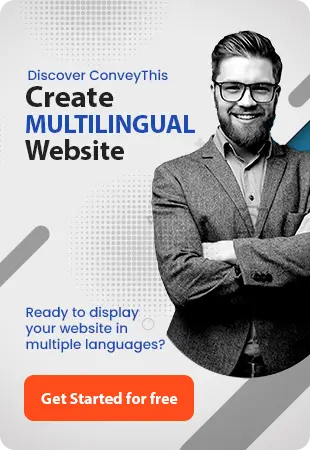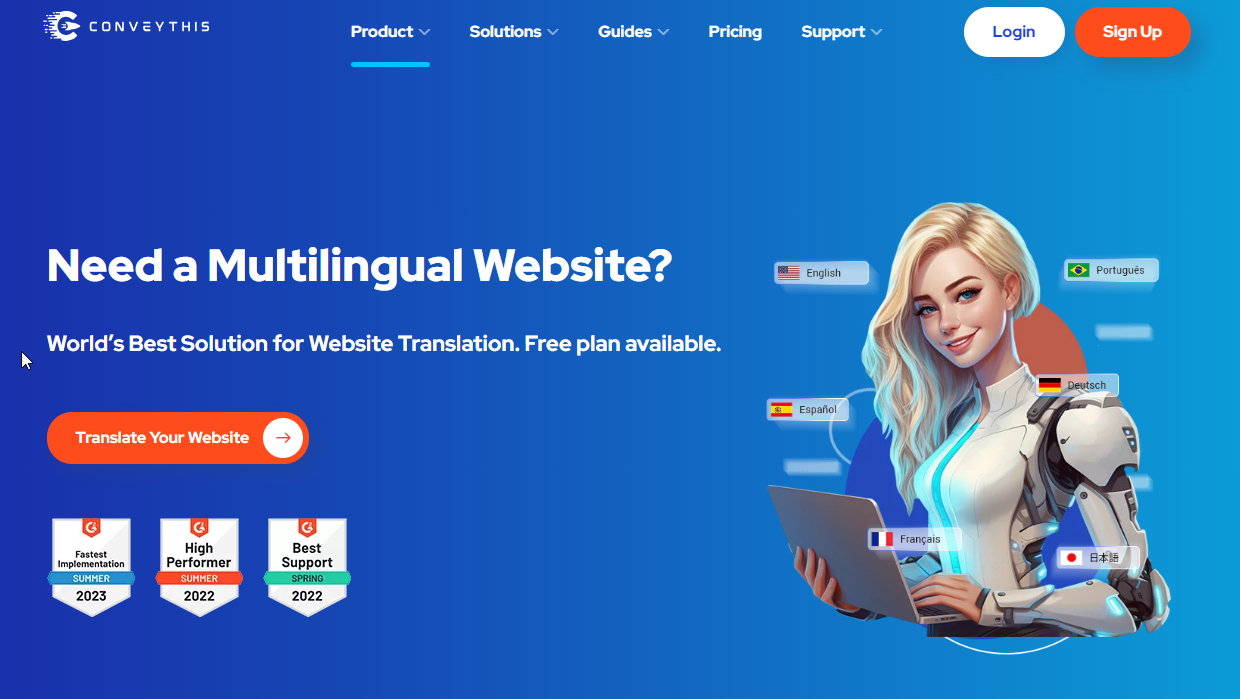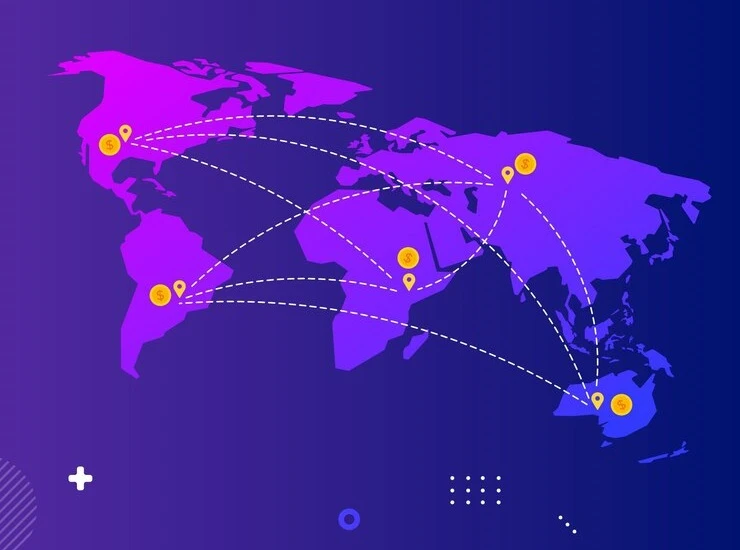Website Localization Issues to Avoid with ConveyThis
Business owners who want to boost their users’ engagement, experience and interest on their website have no other means about it other than localization of the website. In their definition of localization, Globalization and Localization Association (GALA) said that localization “is the process of adapting a product or content to a specific locale or market.” If you notice in the GALA’s definition of Localization, you will observe that it was stated that translation is only one of several elements of the localization process. So, localization is not limited to translation. Rather, localization encompasses translation and other elements as norms and values, cultural, commercial, religious and political beliefs that will make your products and services get personalized to different groups of customers from different geographical location.
When we look at the work that is involved in localization, we may quickly admit that it is not a simple task because of the elements, components and resources that will be needed. However, many people make serious mistakes when they try to localize their websites. As a result, in this article, there are serious issues and mistakes that one needs to avoid during website localization.
They are:
1. The Wrong Choice of Translation Method
As earlier noted, translation is not all that is required for localization yet translation role in localization cannot be downplayed. When trying to choose a translation method, try to select a method that rightly balances cost, maintenance, accuracy and speed. In website translation, there are two methods you can choose from. These are human translations and automatic or machine translations. Human Translations:
When you opt in for this option, it means you will have to hire professional language translators to handle the translation task for you. These translators will then render your websites page by page in a targeted language from the source language. If you need a quality and accurate translations, human professional language translators are the best bets. But before you quickly subscribe to this option, remember that the translators are not technically oriented. This means that they won’t be able to handle the technical part of putting or integrating the translated contents on your website and you will be needing additional services of a website developer to do that. Also, remember that it is not cost effective to hire translators because you will need multiple professional translators for each of every languages you will be translating your contents into and for the various web pages found on your website.
Machine or Automatic Translations:
While we can be certain of quality and accuracy in human translation method, we cannot fully say those about machine translation. However, it is said that machine translation will improve with time as it has proven overtime. It is noteworthy that Machine translation is fast and more economical than human translation. It is, in fact, the best way to start your website translation from the beginning to the end. Starting a website translation project may be somehow difficult especially when you are not sure of which method to use. If you are in this shoe, worry not! Reason is that ConveyThis will help you to handle both localization and internationalization projects of your websites for you. ConveyThis maintains the balance between all parameters. It avails you a machine translation services, post-translation human editing, integrating professional translators and handling the technical aspect of letting your translation come to live on the website. ConveyThis also has an inherent translation management system where you can modify and make needed adjustment to translation.
2. Overlooking Designs Deliberations
Another pitfall to avoid is the mistake of not carefully considering your website design. Your website design is a major player when it comes to localization. Your first design thought should be on how you will be using a well-developed theme for your website irrespective of whatever Content Management System (CMS) you are using. Your selected theme should be in agreement or compatible with most of the plugins and applications that aids the smooth-running of the website. The theme should encourage RTL (Right to Left) formatting and well structured.
Also, when you want to integrate you already translated web content with your website, be especially careful about how your front end appears because the change in language may affect the space or length of characters that appears on the page. Hence, in your designs you should have a forethought of this and enables enough space that will cater for any anomaly that may want to come up when translating from one language to another. If you do not anticipate and contemplate this scenario, you may later find out broken strings and texts overlapping themselves. And this will make customers to lose interest once they see such.
Another mistake that can also ensue here is using custom fonts for your website. These custom fonts tend to pose a challenge when translating to another language because they are sometimes not translatable with ease.
3. Ignoring Cultural Background
It has been repeatedly stated in this article that localization goes beyond mere rendering or contents from a source language to targeted languages. Whenever you are localizing, you focus on specific geographical locations. More than one country may have the same language as their official language yet they may have prominent differences in the way and manner they use the language in each of the countries. When localizing in such case, you will have to consider the cultural background of the targeted group and tailor your use of language accordingly.
A typical example is the “English language”, the first language spoken in the United Kingdom and in the United States. You will agree that even with the fact that they speak same language there are discrepancies in the way and meaning that is applied to certain words in each location. Spelling although quite similar sometimes differs. E.g. the word ‘localize’ in America is spelt ‘localise’ in the UK. So, when localizing your web content to meet the need of customers in the UK, you should use the UK format. And if you are selling wears, for example, to an audience in UK, you may should use ‘knicker’ in your advert instead of ‘shorts’ that is popular with the US community. You can then switch to the opposite when you have audience in the US in mind.
With this, it will be essentially proper to review images and media available on your website. The reason for translation is to convey information to your customers using a medium, here language, which is understandable to your customers. Same goes with graphics and images.
To illustrate further, you may want to include a tourist site from France as an image when the contents are tailored to French customers but use a different image when talking about tourism in Vietnamese.
Also remember that certain celebrations, festivals and holidays may not be celebrated worldwide. So while localizing content, find a suitable parallel event that will help drive home the point of what is been discussed.
4. Wrong Choice of Translation Technology
When translating you should not make a mistake of choosing a wrong translation technology. The way the series of available translation technology handles contents varies from one to another some of which are not suitable for a Multi language website. One thing to note here is that whatever translation technology you will be choosing, it should avoid duplicating pages because such websites may get penalized by search engines in the areas of SEO ranking. You can avoid such penalties if your localized web pages are embedded as sub-directories. For example, the website www.yourpage.com can have a sub-directory www.yourpage.com/vn or vn.yourpage.com for Vietnamese audience.
ConveyThis offers automatic sub-directories and subdomains for any language and also handles other localization functions such as enactment and execution of attributes or tags. Such tag or attribute act as a pointer for search engines to determine the source language and the targeted language area.
5. Neglecting International SEO
One thing all owners of website usually want is that their website becomes visible and understandable to anyone from anywhere around the globe. And to achieve this, the SEO strategy to be implemented must be multilingual.
International SEO, otherwise known as Multilingual SEO, is simply doing the same thing that would be done for a local level SEO but this time not for a single language but for all languages that your site is available in. When the tags are fully added, all site contents and metadata translated, and there are subdomains and sub-directories peculiar to the languages, then you can say you have a successful multilingual SEO.
If the international SEO of your website is cared for, your website will be available and discoverable by anyone searching in any foreign language. However, international SEO may become cumbersome and takes longer period to complete but if you choose ConveyThis for your localization and translation, you are assured that everything including multilingual SEO will be handled automatically.
In conclusion, localizing your website means you are personalizing the website. Any organization seeking growth must think about localization. Although when we consider the effort and resources that goes into localization and internationalization, many may become overly disturbed. Fortunately, there are tools and solutions available to facilitate the work. These tools will make it possible for you to avoid the downfalls and drawbacks that many have encountered. One of such solution and smart tool is ConveyThis.
Translation, far more than just knowing languages, is a complex process.
By following our tips and using ConveyThis , your translated pages will resonate with your audience, feeling native to the target language.
While it demands effort, the result is rewarding. If you’re translating a website, ConveyThis can save you hours with automated machine translation.
Try ConveyThis free for 7 days!



